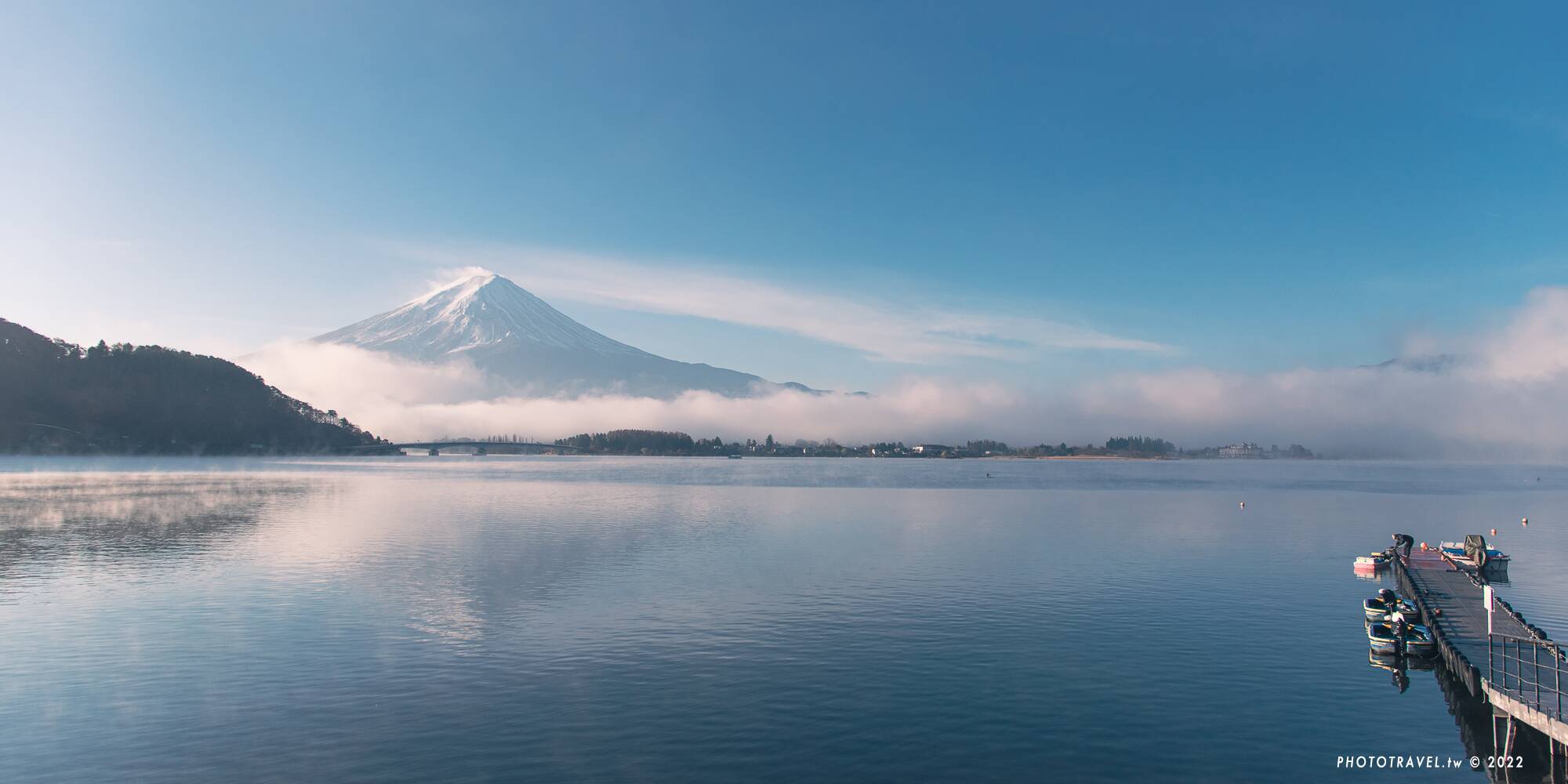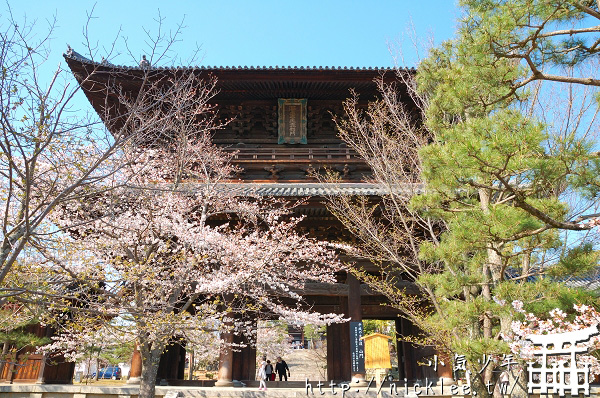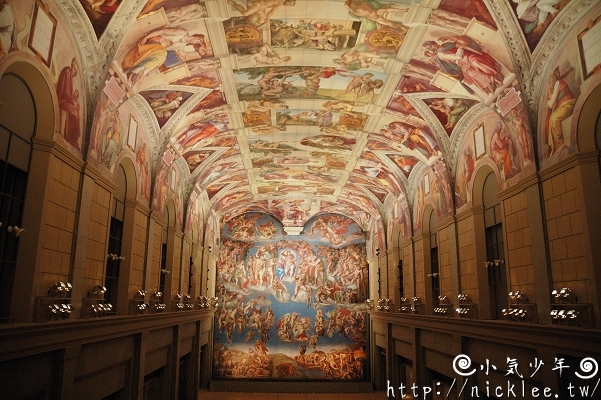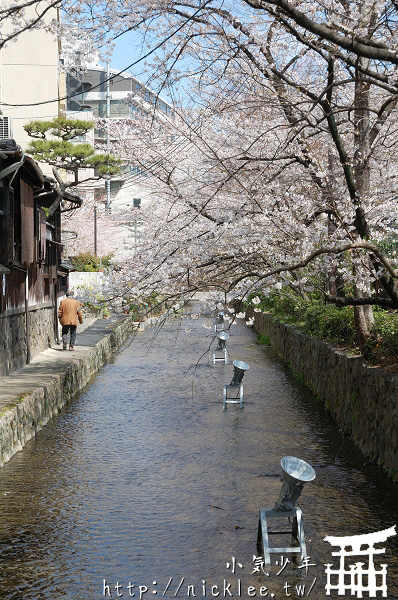Japan, only a 2-4 hour flight away from Taiwan, has always been the top choice for Taiwanese travelers due to its geographical proximity and convenient transportation. Before the pandemic, more than 4 million people visited Japan each year, demonstrating the Taiwanese people’s love for traveling to Japan.
In this article, I will share his personal experiences from his self-guided tours in Japan, focusing on popular cities like Tokyo, Osaka, and Kyoto, to provide itinerary planning references for those planning to travel to Japan.
Philos’s Travel Notes
Self-guided tours in Japan are among the top three choices for Taiwanese travelers! If it’s your first time traveling to Japan, there’s no need to worry. You can start by visiting larger cities like Tokyo, Osaka, and Kyoto. These cities have well-developed transportation systems, offering flexibility in itinerary planning and movement. Plus, you can easily find plenty of information about attractions, transportation, and accommodations on search engines.
Choosing Cities and Locations for Your 2024 Self-Guided Tour in Japan

Tokyo has always been the top choice for Taiwanese travelers visiting Japan.
If you’re planning a self-guided tour in Japan, I highly recommend the Kanto and Kansai regions. These two areas are very convenient in terms of transportation and accommodation, and most tourist attractions can be easily reached by public transportation.
The Kanto region includes popular cities like Tokyo, Yokohama, Chiba, and nearby tourist spots like Lake Kawaguchi at Mount Fuji and Karuizawa. The Kansai region is centered around Osaka, with nearby cities like Kyoto, Nara, and Kobe. In recent years, the Chubu and Hokuriku regions, including Nagoya and Shirakawa-go, have also become popular among Taiwanese travelers due to their unique travel experiences that differ from those in big cities.
As for Hokkaido and Okinawa, although they are also popular travel destinations for Taiwanese people, they are not recommended for beginners due to the difficulty of self-guided tours (some locations require car rental). Therefore, they are not included in this article!
Recommended Duration for a Self-Guided Tour in Japan

Strictly speaking, there’s no standard answer to this question. It depends entirely on your travel budget and the amount of time you can take off. Generally, a five-day, four-night trip is considered a basic duration, which can be adjusted based on the places you want to visit. From my personal experience, I planned my three Osaka-Kyoto self-guided tours for five days and four nights each, while my Tokyo trip, which included a visit to Lake Kawaguchi, was planned for seven days and six nights. For the Hokuriku region, where travel times are longer, I recommend planning for a longer duration.
Preparation for Planning a Self-Guided Tour in Japan
While many people believe that traveling abroad should be about leisure and relaxation, even so, planning your itinerary and transportation in advance can not only make your self-guided trip to Japan smoother, but also save a considerable amount of travel and transportation costs, allowing you to truly enjoy the pleasure of the journey.
Tools for Planning a Self-Guided Trip to Japan
In terms of planning tools, I make good use of two cloud-based tools provided by Google. One of them is “Google Sheets” which I use as a tool for planning and noting information for my self-guided trip to Japan. The advantage of using cloud-based spreadsheets is that they can be edited anytime, anywhere, and you can even use the mobile version of the spreadsheet app to view your itinerary on the go, which is very convenient. If you’re interested, you can refer to my itinerary planning spreadsheet. (Feel free to download a copy of the spreadsheet for your own use, but please do not distribute it on personal blogs or platforms without permission.)

Google Sheets is a very useful online tool for planning your itinerary.
Another useful tool provided by Google is the familiar Google Maps, which can be used to find the locations of attractions in Japan, the relative distances between attractions; you can even make good use of Google’s built-in “My Maps” feature to mark places you want to visit, restaurants, stations, and accommodation locations in advance. You can even use different symbols for marking, making it a very useful planning tool.
Recommended Transportation Tickets and Ways to Check Transportation in Japan
When planning transportation for travel in Japan, if you’re planning to stay in the same area for more than 3 days, then I highly recommend purchasing transportation packages, which can save a lot of transportation costs!

Choosing the right transportation ticket can save a lot of transportation costs for a self-guided trip to Japan.
In terms of public transportation inquiries, I highly recommend Japan Yahoo’s “Transfer Guide“. Just enter the conditions of the departure point and destination, and the travel time you want to search for, and the system will automatically suggest the shortest route for you, or you can set conditions according to your own needs (for example, to save money) to find the right transportation plan. In addition to the computer version of the website, the Transfer Guide also provides an APP for download. It is recommended to download it before departure, as it will be much more convenient to search during the trip. (However, currently only the Japanese version of the APP platform can be downloaded. If you need to download it, you can apply for a Japanese account to download it.)

Japan YAHOO’s Transfer Guide platform is very convenient for inquiring about transportation or transfers. (Image taken from Transfer Guide with added explanation.)
Choosing an Airline for Travel to Japan
There are many airlines to choose from when traveling to Japan. In terms of domestic airlines, there are China Airlines, EVA Air, and STARLUX Airlines to choose from; Japanese airlines include ANA and Japan Airlines, etc.; budget airlines include Tigerair Taiwan, Peach Aviation, etc. The choice depends on your personal budget and departure time, as the flight time to Japan is short, comfort should not be a major consideration.

There are many airlines to choose from when traveling to Japan.
Choosing Accommodation in Japan
When traveling to Japan, if you are going to major cities, accommodation is generally not a big issue. In Tokyo and Osaka, there are many hotels and chain business hotels to choose from; websites like Airbnb also offer legal local rentals for negotiation. The quality of guesthouses and hotels in Japan is generally above a certain standard, as long as you book and prepare in advance, the quality of accommodation is generally not too bad. (I would recommend avoiding guesthouses opened by Chinese operators in the past, as they are not as strict in hygiene management as Japanese operators.)

There are still many guesthouses in Japan with good quality accommodation.
Cost of a Self-Guided Trip to Japan
When it comes to the cost of a self-guided trip to Japan, it’s hard for me to give a concrete figure, as everyone’s budget and travel style varies. However, a rough estimate can be made as follows:
- Flights: Round-trip tickets to Japan on traditional airlines currently range from about 10,000 to 15,000, depending on the destination and season (though prices have indeed risen post-pandemic). There are also many budget airlines to choose from, which can save a significant amount on flight costs.
- Accommodation: A night’s stay in Japan typically falls between 2,000 and 7,000 TWD (for a double room), with a noticeable price difference between guesthouses and hotels. In major cities like Tokyo and Osaka, where there are fewer guesthouses, hotel costs naturally tend to be higher.
- Transportation: This depends on the distance between the two places you’re traveling. I usually buys a one or two-day subway/metro pass for city travel, and if there are destinations outside the city, he opts for transportation packages like the JR PASS or a tourist pass, which can save a lot on transportation costs.
- Food and Drink: A meal in Japan generally costs around 300 TWD. Depending on your itinerary, you can plan for a few more expensive meals, with prices ranging from 500 to 700 TWD. The quality of food in Japan is generally high, so you don’t have to worry about hitting a bad restaurant.
Based on my own experience, a five-day, four-night self-guided trip to Japan costs roughly between 30,000 and 35,000 TWD (pre-pandemic travel cost reference), excluding the cost of purchasing luxury goods. If you’re looking to save, you can also take advantage of a weaker yen to reduce some travel costs.
12 Must-Visit Tokyo Attractions Recommended
Tokyo is the top choice for Taiwanese people traveling to Japan. If you want to play from morning till night, Tokyo can definitely meet your needs! In addition to shopping hotspots like Shinjuku, Shibuya, and Omotesando, there are also affluent areas like Roppongi and Ginza. Historical and cultural sites like Meiji Jingu and Senso-ji are also worth a visit. If you extend your trip to the surrounding cities of Tokyo, you can visit places like Enoshima, Kamakura, Yokohama, and even Tokyo Disneyland. Lastly, places like Karuizawa, known for its autumn leaves, and Lake Kawaguchi near Mount Fuji, are also worth including in your Tokyo itinerary!

Tokyo boasts a wealth of modern urban features, satisfying all your shopping and sightseeing needs.
Meiji Jingu
The Meiji Jingu, dedicated to Emperor Meiji, is a must-visit when in Tokyo. It’s an important center for Shinto worship. Also, the ginkgo avenue outside the Meiji Jingu Outer Garden is spectacular when the leaves change color. If you’re visiting Tokyo in the autumn or winter, it’s worth a visit.

The Meiji Jingu is an important center for Shinto worship in Japan.

The ginkgo avenue outside the Meiji Jingu Outer Garden is spectacular when the leaves change color.
Shibuya
Located next to Shinjuku, Shibuya is another must-visit in Tokyo. Along with Shinjuku and Ikebukuro, it’s one of Tokyo’s three major sub-centers and one of the most representative shopping districts. In addition to the famous “109 Spicy Girls” originating from Shibuya, there are many trendy brand stores gathered here. Don’t miss out if you’re planning a shopping spree in Tokyo!

Shibuya is home to many young brands, making it a great place for shopping.
Roppongi Mori Tower (Tokyo City View)
The Roppongi Hills Mori Tower’s Tokyo City View on the 52nd floor is an excellent spot to take in the cityscape of Tokyo! Philos believes it’s the best place to enjoy Tokyo’s night view! You can see famous Tokyo landmarks like Tokyo Tower and Skytree.

Visit Roppongi Tokyo City View to take in the day and night views of Tokyo.
Tokyo Station
Tokyo Station, known as the gateway to Tokyo, is stunningly beautiful, especially after its renovation. The Marunouchi Station Building and Marunouchi Station Square are particularly spectacular when lit up at night. If you’re visiting Tokyo, make sure to schedule some time to capture the beautiful night view of Tokyo Station.

The night view of Tokyo Station is spectacular and captivating.
Ginza
For me, Ginza is a paradise for the affluent shopper, partly due to the higher pricing of some Ginza stores. Nevertheless, places like Itoya are still worth a visit. Additionally, the Ginza Clock Tower is a must-see landmark, and it’s a great spot for night photography!

Ginza is Tokyo’s luxury shopping haven.
Senso-ji
Senso-ji is another must-visit spot in Tokyo. The temple is dedicated to the Asakusa Kannon, an important deity in the area. The “Kaminarimon” at the entrance of Senso-ji is a popular photo spot for many visitors. However, the temple can get crowded on holidays, with people lining up along the shopping street all the way to the main hall. If you want to capture the temple with fewer tourists, you might want to avoid peak times.

Senso-ji is a must-visit when in Tokyo!

Senso-ji and its five-story pagoda at night.
Skytree
The Tokyo Skytree is currently the tallest building in Tokyo, also known as the Tokyo Sky Tree, and is certified by the Guinness World Records as the “World’s Tallest Tower”. The Skytree is located near Asakusa Temple, which offers a clear view of the tower. If you have spare time, consider renting a bicycle in Asakusa to capture the beauty of the Skytree from different angles.

Asakusa is one of the closest places to view the Skytree.
Odaiba
Odaiba is an island located in the southern part of Tokyo Bay, offering beautiful views of the bay. Not only are there many large shopping centers on Odaiba, but you can also see the Tokyo version of the Statue of Liberty and the Odaiba Rainbow Bridge at Odaiba Seaside Park. For Gundam fans like me, Odaiba also features a must-see 1:1 Gundam Unicorn statue and the Gundam Tokyo Base.

Odaiba boasts a 1:1 giant Unicorn Gundam statue.
Tokyo Disneyland
Tokyo Disneyland is also a must-visit in Tokyo, with two major parks, Land and Sea, requiring at least two days to fully enjoy. Loved by both children and adults, Tokyo Disneyland not only features parades led by Disney stars, but also a nightly fireworks show over the castle, along with endless amusement facilities. It’s definitely worth a visit!

Tokyo Disneyland is loved by children and adults alike.
Yokohama
Located next to Tokyo, Yokohama is a famous tourist city in Kanagawa Prefecture. Famous attractions in Yokohama include the Minato Mirai district, Yamashita Park, and Chinatown. Not only is Yokohama known for its night view, but the streets near Yamashita Park also turn golden during the ginkgo season, creating a very exotic atmosphere.

Yokohama’s Chinatown is famous for its many Chinese restaurants.
Enoshima and Kamakura
Enoshima is located southwest of Tokyo and Yokohama and is a suburban attraction near Tokyo, about an hour’s drive away. Taking the Enoshima Electric Railway and touring the Shonan coast to visit the attractions along the Enoshima line all the way to the ancient city of Kamakura is definitely worth a full day’s visit!

Taking the Enoshima Electric Railway to tour the Shonan coast is the most convenient way.
Mount Fuji Lake Kawaguchi
If your purpose of visiting Tokyo is to admire the beauty of Mount Fuji, then I highly recommends Lake Kawaguchi at the foot of Mount Fuji. Lake Kawaguchi is about a 2-hour drive from downtown Tokyo, with convenient direct bus or rail access from the city center. It’s suitable for a day trip during your Tokyo itinerary, offering close-up views of Mount Fuji’s beauty.

Lake Kawaguchi offers close-up views of Mount Fuji’s beauty.
5 Must-Visit Osaka, Kobe Attractions Recommendations
Osaka serves as a major transportation hub in Japan’s Kansai region and is typically the first city travelers visit after landing at Kansai Airport. Osaka boasts a plethora of attractions, from the famous Osaka Castle to the vibrant Dotonbori and Shinsaibashi areas that become even more beautiful at night. These areas are not only foodie havens but also shopping paradises. Nearby satellite city Kobe also offers numerous attractions, such as the night views of Kobe Harbor, Mount Maya, and the impressive Akashi Kaikyo Bridge. For those willing to venture further, it’s worth considering a five-day trip to Okayama, easily accessible with a transportation pass.

Osaka is a top choice for many travelers planning a trip to Japan.
Dotonbori and Shinsaibashi
Dotonbori and Shinsaibashi are two of Osaka’s most iconic streets, lined with endless food options such as Okonomiyaki, Ramen, Dumplings, and Takoyaki. The area is also home to the classic Dotonbori landmark, the Glico Running Man, and many shops with oversized signs, all contributing to the lively atmosphere of Dotonbori. It’s a must-visit when in Osaka.

The Glico Running Man is a classic landmark in Dotonbori.
Abeno Harukas 300 Observatory
If you’re looking to enjoy a night view in Osaka, I highly recommend the Harukas 300 Observatory in Abeno, which offers a better view than the Umeda Sky Building. The observatory, located on the 60th floor, provides a panoramic view of Osaka. I recommend visiting in the evening to capture the transition from day to night.

The Abeno Observatory offers a panoramic view of Osaka at night.
Osaka Castle
Osaka Castle, one of the three most famous castles in Japan, is located within Osaka Castle Park. Its central location and complete castle tower make it a must-visit for anyone interested in Japanese castles.

Osaka Castle Park is vast.
Akashi Kaikyo Bridge
Located in Kobe, the Akashi Kaikyo Bridge is currently the longest suspension bridge in the world, connecting Kobe and Awaji Island with a total length of 3,991 meters. When visiting, you can not only admire the grandeur of the bridge from the shore but also climb to the top of the bridge tower to enjoy a breathtaking view from 98 floors high.

From the top of the Akashi Kaikyo Bridge, you can experience a different perspective.
Himeji Castle
Himeji Castle, voted the number one must-visit castle in Japan, is located in Himeji, next to Kobe, and was listed as a World Heritage Site in 1993. The castle’s white exterior is striking, and on a clear day, it exudes a grandeur that is hard to miss. I recommend using the JR Pass Kansai Area Pass, which allows you to travel quickly and conveniently from Shin-Osaka to Himeji by Shinkansen.

Himeji Castle, with its white exterior, is striking.
9 Must-Visit Kyoto, Nara, Uji Attractions
Kyoto is another favorite city for Taiwanese travelers visiting Japan. Although it’s also accessed via Kansai Airport like Osaka, Kyoto offers a completely different atmosphere and charm. Known as Japan’s ancient capital for a thousand years, you can see tourists in traditional kimonos wandering around the city’s historic sites and streets. Kyoto’s attractions are numerous, including the world-renowned Kinkaku-ji, Arashiyama Togetsukyo Bridge, Kiyomizu-dera Temple, and Fushimi Inari Taisha. You can also visit nearby Uji and Nara to fully experience the ancient capital’s charm.

Kyoto, with its rich ancient capital atmosphere, attracts a large number of tourists.
Kinkaku-ji
Kinkaku-ji is a well-known attraction in Kyoto and a World Heritage Site. The temple’s main building, the Shariden, is covered in gold leaf, hence its name. If you visit in winter when it snows in Kyoto, you might even get to see the “Snow Kinkaku-ji”!

Kinkaku-ji is a must-visit attraction in Kyoto.
Arashiyama
Arashiyama is located not far from Kinkaku-ji, so it’s recommended to plan a visit to both on the same day. Arashiyama is famous for its autumn foliage, with the Togetsukyo Bridge, Arashiyama Park, and Kitano Tenmangu Shrine being popular spots for leaf viewing. If you’re visiting Arashiyama, consider taking a ride on the Sagano Scenic Railway to experience the beauty of the Arashiyama mountains.

Kiyomizu-dera Temple
Kiyomizu-dera Temple is another well-known attraction in Kyoto. The temple is designed with a beam structure, with the Kiyomizu Stage supported by 139 large round logs, each 12 meters high. Kiyomizu-dera Temple attracts a large number of tourists, especially during the cherry blossom and autumn foliage seasons. With the unique shops along Sannenzaka and Ninenzaka, you can stroll all the way to Yasaka Shrine in Kawaramachi, enough to fill an entire day.

Kiyomizu-dera Temple is a landmark tourist attraction in Kyoto.

Shijo Kawaramachi
Shijo Kawaramachi is arguably the best shopping district in Kyoto city, with many Japanese drugstores and general stores, as well as several large department stores for shopping, providing a backup plan for rainy days in Kyoto. There are also many restaurants and izakayas in Nishiki Market and Pontocho, making it a great place to spend an evening when visiting Kyoto.

Kawaramachi is the most bustling shopping district in Kyoto city.
Fushimi Inari Taisha
Fushimi Inari Taisha, famous for its vermilion torii gates, is one of Kyoto’s most iconic attractions. It’s just a 10-minute drive from Kyoto Station. If you want to experience walking through the torii gates, you can’t miss Fushimi Inari Taisha!

Fushimi Inari Taisha is known for its thousands of torii gates.
Mount Hiei Enryakuji Temple
Mount Hiei Enryakuji Temple, located in the northeast of Kyoto, is famous for its autumn foliage. Mount Hiei has long been regarded as a sacred mountain protecting Kyoto, and the thriving Enryakuji Temple was designated a World Heritage Site by the United Nations in 1994. If you’re planning to visit Mount Hiei, it’s recommended to allocate a full day to visit the three pagodas on the mountain.

Mount Hiei is one of Kyoto’s autumn foliage viewing spots.
Jingo-ji
The Kiyotaki, Takao, and Toganoo areas in Kyoto are famous for autumn foliage, with Jingo-ji being the most famous. When the maple leaves turn red in autumn, the temple’s exterior makes for particularly picturesque photos, full of Kyoto’s old-world charm. However, as Jingo-ji is quite far from the city center of Kyoto, it’s recommended to allocate a full day for a visit.

Jingo-ji is a well-known spot for autumn leaves viewing in Kyoto.
Nara Todaiji Temple
Nara is a common day trip destination when visiting Kyoto. Todaiji Temple in Nara is a must-visit tourist spot, famous for its 15-meter-tall Great Buddha. In addition, the deer in Nara Park outside Todaiji Temple are another reason many people visit Nara. If you’re planning to visit, be careful of your belongings as the deer can be quite aggressive!

Todaiji Temple in Nara is one of the most famous attractions in Nara.

Although the deer in Nara Park are cute, they can be quite aggressive when it comes to food.
Uji Byodoin
Uji is located between Kyoto and Nara, and can be visited for half a day when planning a trip to Kyoto or Nara. The most famous site in Uji is Ujigami Shrine, a World Heritage Site and an important cultural property of Japan. The most famous part of Byodo-in is the Phoenix Hall, one of the earliest wooden structures in Japan, and also the building featured on the 10 yen coin!

Byodoin in Uji is one of Japan’s most important cultural heritage sites.
『Original Source:https://www.phototravel.tw/japan-self-guided-tour/』





